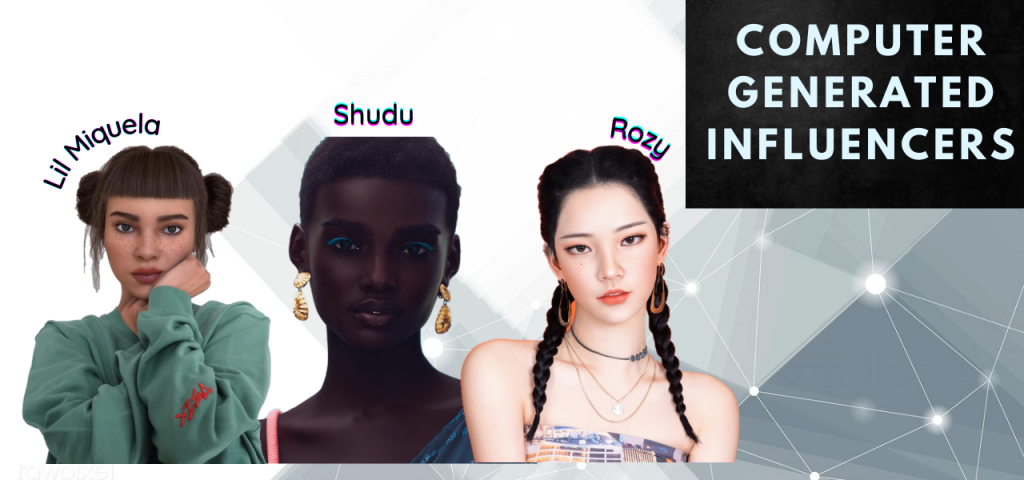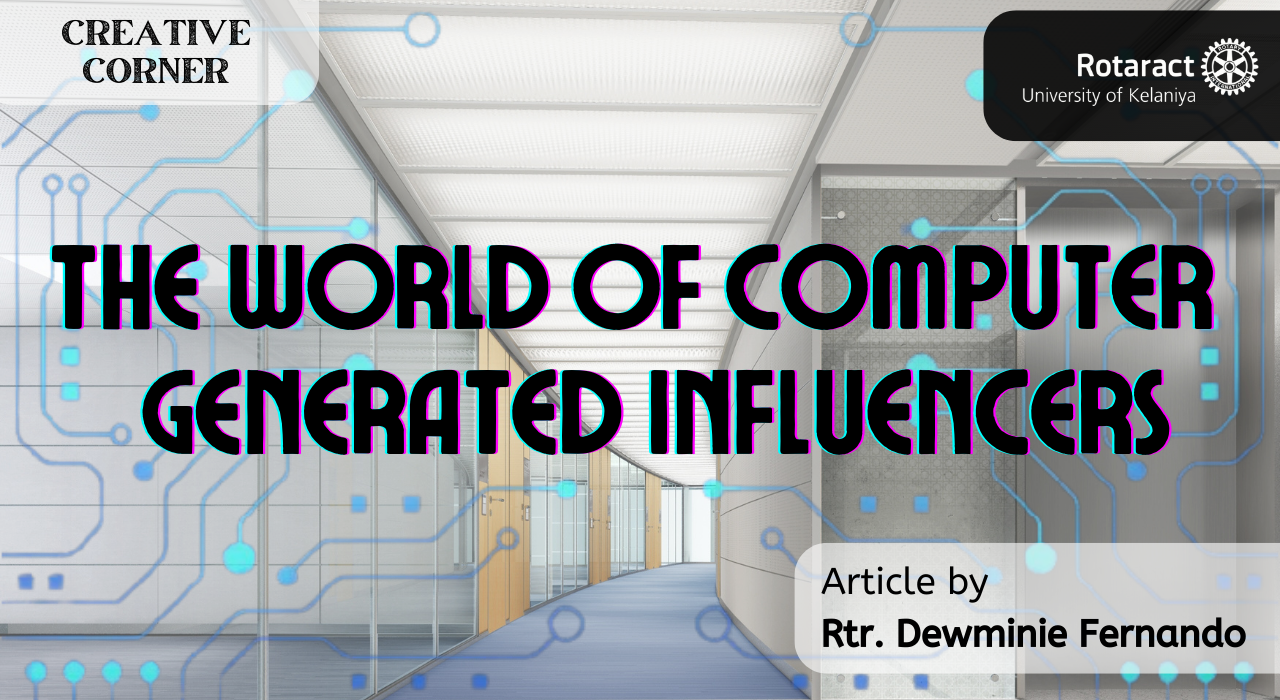Enter the world of Computer Generated Influencers!
It can be challenging to come up with novel ideas that will stand out from the world of people, given the billions of users who are engaged in social media. But the traditional and human era is now fading and the digital means are conquering the world at a really fast pace. Businesses create or collaborate with virtual brand advocates known as virtual influencers in order to avoid the issue of influencer fatigue. “Virtual influencers” are computer-generated people with carefully built and scripted personalities who have been produced by marketing and design teams.
Customers and businesses are growing more concerned with visibility. Digital artists construct their features, backgrounds, and textures using minute details. We only interact with influencers—real or virtual—through the content they give, at the end of the day. The audience may not be able to tell the difference between a virtual influencer and a real, live influencer as a result. If they have the right creative team on their side, virtual influencers may fulfill any position and live up to any expectation. It’s the inherent be as designed, not the traditional do as instructed.
The main justification for why companies could decide to work with virtual influencers is that it makes sure that everything the influencer does, says, and promotes is trustworthy and safe, regardless of where, when, and how the product was developed or made. The frequency of postings as well as the subjects they cover are under your discretion. Utilizing a CGI (Computer Generated Influencer) reduces the possibility of someone disseminating information or acting in a manner that is in opposition to the intended message.
Virtual influencers produce almost three times as much interaction as real influencers. The content of virtual influencers has a higher level of interaction with their followers as a result. From the perspective of the audience and the consumers, everything seems to be going well.

Now let us get a glimpse at some of the very famous Computer Generated Influencers who have made it big in the industry;
- Lil Miquela is the most well-known example of a virtual influencer. She made her Instagram debut in April 2016 and seemed to appear out of thin air. She was not an exception to the rule that no technological advancement, however meaningless, ever truly appears out of nowhere. According to TechCrunch, Lil Miquela’s developers concluded a $125 million funding round headed by Spark Capital in January. Virtual influencers emerged as the advertisements of the future. the upcoming fashion. the direction of business.
- Shudu: She wore idzila, the neck rings associated with the Ndebele people of South Africa, in a series of photographs. She had radiant dark-brown complexion and flawlessly symmetrical features. Her images were shared on pages honoring women of color with the laudatory hashtags #blackisbeautiful, #melanin, and #blackgirlsrock, and she soon gained a following due to her otherworldly beauty. She engages with different mainstream brands through collaborations
Rozy: The line between reality and illusion is blurred by Rozy. She represents everything that is human, but she isn’t actually a human. However, that doesn’t make her spirit drop. She is energetic, entertaining, and very busy right now because of her position as a social media influencer. In her own words, “The Campaigner,” she is a fashionista, diva, fitness fanatic, world traveler, and dedicated to the long-term health of our ecosystem.
The Digital era is exciting, beautiful and fascinating. Let’s be fearless to embrace the explicit wonder of it!



